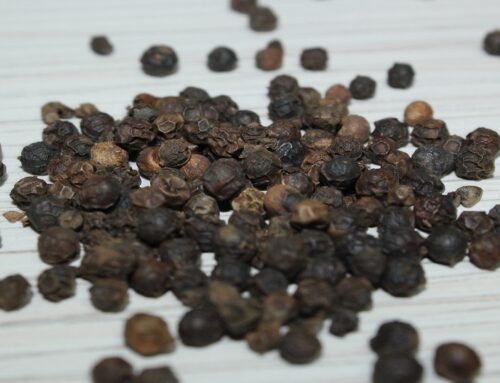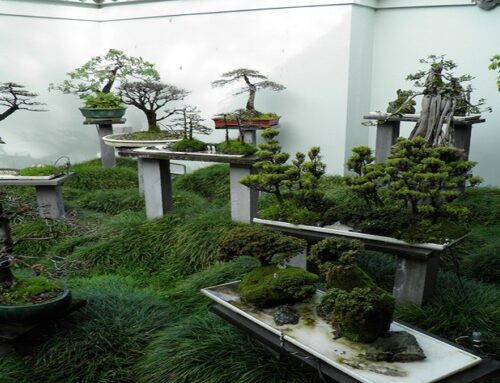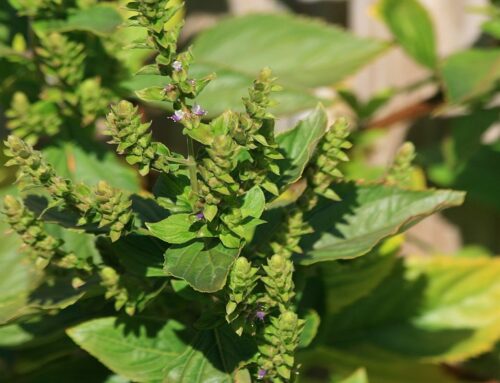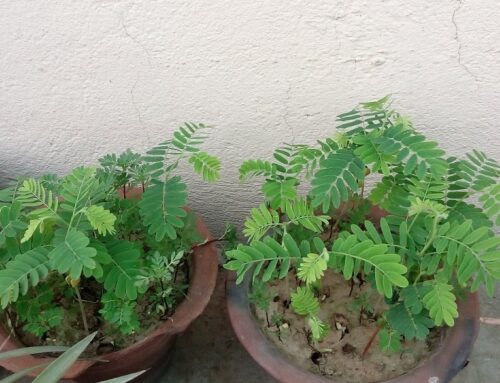Modified Atmosphere Packaging Technology (MAP): Modified atmosphere packaging technology (MAP), a popular packaging technology of modern times, is used to extend the shelf-life of perishable fruits and vegetables.
In MAP, the environment around the individual products is modified to bring out desired results of shelf-life extension and product safety. Environment around the individual products can be modified either by creating a vacuum in the package (Vacuum Packaging), where there is almost a complete absence of gas or by using special films to allow naturally respiring produce to form its own atmosphere without the addition of external gases.
For certain commercial applications, MAP is formed by an optimal blend of gases within a high barrier or permeable package. This process is called ‘Gas Flushing’. Generally, oxygen, carbon dioxide and nitrogen are used as MAP gases. Sometimes carbon monoxide and other inert gases are also used however, it is not recommended due to their toxic nature. Modified atmosphere around the individual product restricts the life activities of the product as well as the microbes.
MAP is also known as protective atmosphere packaging or reduced oxygen packaging. MAP is considered to be the best packaging solution for packing meats and meat products; egg and poultry; fish and fish products; dairy products; ready to eat meals; bakery products; fruits and vegetables; snack foods; dried foods; liquid foods and beverages and fresh cut fruits and vegetables.
MAP Facts: The best possible quality for a fresh produce exists at the time of its harvest and the harvest quality of this produce cannot be improved but can be maintained by adopting proper MAP practices. The rate at which a product deteriorates depends on certain factors such as the physical structure and properties of the product, the type of microorganisms present and the environment in which the product is kept. Hence adopting proper post harvest management practices is of critical importance for the product shelf life extension under MAP. Therefore factors that affect the product quality must be controlled for shelf life extension of fresh produce.
Advantages of MAP: MAP has now become an essential practice for preserving the fresh quality of the fruits and vegetables. MAP technology restricts the metabolic processes of the fresh produce that are responsible for rapid product deterioration.
MAP reduces ethylene biosynthesis: Ethylene is a ripening hormone present in all fruits and vegetables in varying degrees. Mechanical injuries of fruits and vegetables accelerate ethylene production and therefore accelerate rapid ripening and product deterioration process. Some examples of ethylene effects include, yellowing and abscission of leaves in broccoli, cabbage, Chinese cabbage, and cauliflower, accelerated softening of cucumbers, softening and off-flavor in watermelons, discoloration and off-flavor in sweet potatoes, sprouting of potatoes, increased ripening and softening of mature green tomatoes, increased toughness in turnips and asparagus and bitterness in carrots and parsnips. In MAP, factors responsible for accelerating ethylene synthesis is carefully considered and controlled by controlling temperature and by minimizing microbial activity through high standards of product hygiene.
MAP regulates product temperature: Temperature also has an effect on the shelf life of the fresh produce. Exposure of fresh produce to extremes of heat or cold may cause serious physiological damage to the product which may lead to rapid deterioration. It may also cause product sweating which in turn accelerates product deterioration. Exposure of fresh produce to extreme temperatures may cause heat injury, symptoms of which include bleaching, surface burning, scalding, uneven ripening, excessive softening and desiccation (water loss). In MAP, it is a mandatory practice to maintain an effective cool chain management system and therefore the adverse effects on product quality due to temperature variations are highly minimized.
MAP prevents moisture loss from products: Another major factor that adversely affects the product quality is its moisture content. Moisture loss from fresh produce accelerates its deterioration by shriveling or shrinking the products and by reducing the fresh weight of the product. Factors that affect moisture loss from fresh produce are relative humidity; temperature of the product; environment in which it is kept and air velocity. In MAP, moisture content of the products is controlled by selecting and using product-specific polymers as packing materials.
MAP ensures product safety and quality: MAP inhibits microbial growth and controls all post harvest factors that result in product deterioration. Therefore shelf life of fresh produce can be extended up to 50-400% using MAP.
MAP reduces product losses during long transit time: MAP extends product transit time during transport and therefore product losses are reduced to a minimum.
Disadvantages of MAP: MAP is not suitable for all products as product-specific characteristics play a crucial role in the performance of a modified atmosphere packaging. Since temperature control is of critical importance in MAP, a broken cool chain may result in poor performance of packaging. Major technological challenges faced by MAP sector are in the field of developing product specific gas formulations and compositions. Developing special packing materials and packing machines for MAP also face lots of challenges. MAP industry is also struggling with the development of MAP packages that maintain oxygen partial pressures within tolerance levels as packages undergo changes in temperature and humidity. Challenges also remain in avoiding adverse physiological responses to modified atmospheres. Overall, MAP is an expensive packaging technology which involves additional packaging costs.
We have a book with detailed information on this topic and for more info, please click here…
Both kindle eBook version and Paperback version of this topic is available at all Amazon stores. For more info, click here…
Types of MAP: Various types of Modified Atmosphere Packaging are Modified Humidity Packaging; Hypobaric Packaging; Vacuum Packaging; Gas Packaging/Gas Flushing and Equilibrium Modified Atmosphere Packaging.
Equilibrium Modified Atmosphere Packaging: When a fresh produce is packed within a MAP packing film, its respiration reduces and as a result, oxygen concentration is reduced and correspondingly carbon dioxide concentration is increased. Produce respiration further lowers until an equilibrium state is reached between oxygen and carbon dioxide concentration. This state is called an Equilibrium Modified Atmosphere.
At equilibrium modified atmosphere, oxygen uptake and carbon dioxide release by the product equals the oxygen and carbon dioxide permeability of the bag. At this point, ethylene synthesis is reduced resulting in delay in product senescence and chlorophyll degradation, therefore product yellowing is reduced. Microbial growth is also reduced and therefore rapid product deterioration is delayed. Break down of sugars and other nutrients is reduced and as a result product quality is maintained. In a nutshell, MAP can increase shelf life; slow microbial growth; maintain nutritional value of foods and slow down browning or discoloration of the produce but it cannot stop microbial growth and improve the quality of the packed commodity.
Modified Humidity Packaging: When a fresh produce is sealed in a MAP bag, its transpiration rate increases and as a result, relative humidity within the bag increases up to 90-95 percent. This modified humidity (MH) is beneficial for maintaining product quality because MH reduces dehydration of the product and thereby prevents its weight loss. However, there are certain risks associated with modified humidity. If product-specific MAP film is not used, MH may result in increased microbial activity and therefore product deterioration may be accelerated. Not only this, but MH may also enhance physiological activities of the packed produce (for example, sprouting of buds, regrowth of leaves etc). There may also have higher incidence of physiological disorders such as browning or product discoloration. Such risks associated with MHP can be completely eliminated by using custom-engineered MAP film for each specific produce. Generally, use of a MAP film having high WVTR (water vapor transmission rate) and low OTR (oxygen transmission rate) is the best solution for eliminating the risks associated with modified humidity. MAP film having high WVTR releases excess moisture present inside the package into the surrounding atmosphere and its low OTR can be manipulated to maintain optimum gas composition inside the package.
Blending of Modified Atmosphere and Modified Humidity: Packaging industry is now experimenting with a blend of Modified Atmosphere and Modified Humidity technologies for optimizing packaging solutions for the fresh produce. While non-perforated films are generally used for atmosphere modifications, perforated films may provide the additional option of controlling moisture loss as well. In this combined technology, product quality is maintained and product shelf life is prolonged up to the maximum possible extent due to the combined effects of Modified Atmosphere (high CO2 and low O ); Modified Humidity (90-95 % RH) and condensation control (removal of excess moisture).
Vacuum Packaging: Vacuum packaging makes use of a range of low or non permeable films (barrier films) and containers for MAP. When a horticultural commodity is placed into the pack, the air is removed and the pack is hermetically sealed under a vacuum with the help of a vacuum packaging machine. No other gases are added to replace the space created by the air removed. However, certain advanced vacuum packaging machines are capable of ‘Gas Flushing’ i.e. a flush of gases are added to replace the space created by the air removed. These advanced vacuum packaging machines are capable of finishing the whole series of procedures like vacuum extraction, gas flushing, sealing, printing and cooling. The products, thus packed have comparatively longer shelf life than the products packed with simple vacuum extraction technology.
Gas Flushing: When MAP gases are flushed in definite proportions into a package to modify the atmosphere around the products, it is called gas flushing. MAP gases such as oxygen, carbon dioxide and nitrogen are classed as food additives under two Acts, the Directive of Food Additives (89/107/EEC) and the Directive of the use of food additives other than colors or sweeteners (95/2/EC). Oxygen is used to preserve respiration, growth rate and composition of flora while carbon dioxide is capable of inhibiting microbial activity if added in optimal concentrations i.e. 20-30%.
MAP Technology from Industry Leaders
FreshSpan from DuPont: FreshSpan, DuPont’s Modified Atmosphere Corrugated Packaging System consists of a breathable plastic membrane in the liner of the walls of a corrugated paperboard box, which can be hermetically sealed after the introduction of products. During the storage of produce in the box, carbon dioxide concentration increases and oxygen concentration decreases until an equilibrium modified atmosphere is established and a high humidity is maintained. This system inhibits the expression of hydrolytic enzymes associated with fruit ripening and vegetable decay, maintains cellular structure and reduces microbial viability and growth, and thereby inhibits spoilage. In the FreshSpan packaging system, a ratio of 1:1 carbon dioxide and oxygen can occur (as against the standard ratio of 3:1) during the transfer through the membrane. FreshSpan system requires product cooling prior to sealing and temperature management during storage and distribution. The FreshSpan system is product, country and application specific.
Maptek Fresh from DuPont: DuPont’s Maptek Fresh, when appropriately used stabilizes the produce and places it in a state of hibernation, thereby extending product shelf life. It is mainly used for fresh cut produce.
Xtend MA/MH Packaging from StePac: Xtend MA/MH packaging creates a produce-specific modified atmosphere (high carbon dioxide and low oxygen) and maintains the proper humidity level inside the bag, allowing excess moisture to escape into the environment. This system blocks biosynthesis of ethylene, thereby slowing down senescence; maintain the nutritional value of produce; reduce decay; slow yellowing of green tissues by preventing chlorophyll degradation and inhibit discoloration of cut surfaces. Xtend packaging makes use of polymers with different water vapor transmission rates (WVTR) for humidity regulation. Performance of Xtend packaging is not only due to the produce-specific modified atmosphere that develops within the packaging, but also largely to the hydrophilic nature of the films that are used.
NeoSteam MAP Technology from Mondi Packaging: NeoSteam MAP technology uses MAP film along with a steam-cooking valve for steam cooking of the packed produce. Mondi Packaging’s NeoSteam Retortable Stand-up Pouch is a classic example of this technology. MAP film creates a modified atmosphere within the package while the integrated valve opens automatically during the steaming process for the pressure to evaporate. Produce can be cooked instantly in a microwave thus making it convenient for consumers. This system ensures a product shelf life of 6 – 12 months without refrigerating.
Refresh MAP Technology from Convex Plastics: Convex Plastics has developed ‘refresh MAP technology’ for minimally-processed fresh products such as fresh salads, fresh cut vegetables, peeled carrots and mix salads. Refresh films manipulate oxygen and carbon dioxide concentrations within the packages in order to achieve an equilibrium modified atmosphere. Refresh MAP technology comes with anti-fog materials and hence provides high clarity packaging.
Cryovac Oxygen-Absorbing Sachet: Sealed Air Corporation has developed a unique MAP technology that contains oxygen absorbing materials (oxygen scavengers) for removing the excess oxygen produced within the sealed packages. These oxygen-absorbing sachets can be used either alone or in combination with other MAP technologies such as gas flushing. One of the major advantages offered by this technology is its ability to protect the packed produce from aerobic spoilage.
Controlled Atmosphere Packaging Technology (CAP): Controlled Atmosphere Packaging (CAP) and MAP are often used interchangeably to refer to the use of gas mixtures inside the packages though there are certain differences between these two packaging technologies. CAP system CONTROLS the atmosphere around the packed products through the use of external machines for injecting gaseous mixtures in definite proportions while MAP system only MODIFIES the atmosphere around each individual product. CAP system is mostly used for the bulk packing of highly perishable fruits and vegetables while MAP is applicable to each individual product also. CAP is often used with additives such as ethylene absorbing or scavenging products, oxygen scavengers, sulphur pads, and carbon dioxide emitters for shelf-life extension.
Recent innovations in controlled atmosphere technology include use of additives such as ethylene absorbing or scavenging products and oxygen scavengers; use of membrane systems and sieve beds for creating nitrogen-rich atmosphere; controlled atmosphere with low oxygen concentrations (o.7 to 1.5 % o atmosphere and dynamic controlled atmospheres (where oxygen and carbon dioxide concentrations around the products are modified through monitoring of produce quality attributes such as ethanol concentration and chlorophyll fluorescence). Major commercial applications of Controlled Atmosphere Technology are now limited to using controlled atmospheres for storing and transporting avocadoes, bananas, apples, pears, kiwifruits and certain other fruits and vegetables without chilling injury. It has been established through various experiments that CA is the best option for the shelf life extension of the ripe bananas and controlled atmosphere transport may be used for long distance transporting of nuts and dry fruits also without compromising on its quality. The potential of CA applications is unlimited and it may be commercially used for quarantine treatment as well as long term storage of several fruits and vegetables.
We regularly publish informative videos on various “Food, Agriculture, Gardening and Horticulture” topics. You may view these videos here…
You may also check out our Digital Publishing Services for Food, Agriculture, Gardening and Horticulture Sector by visiting this link







Leave A Comment
You must be logged in to post a comment.